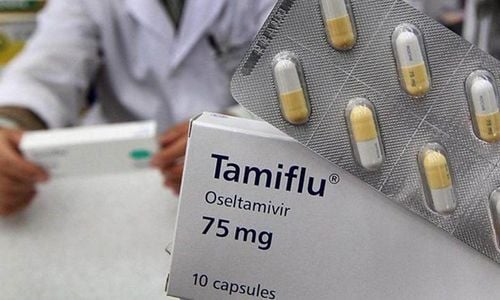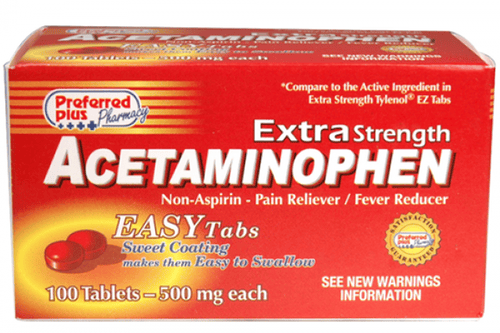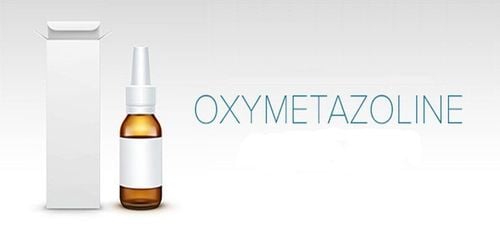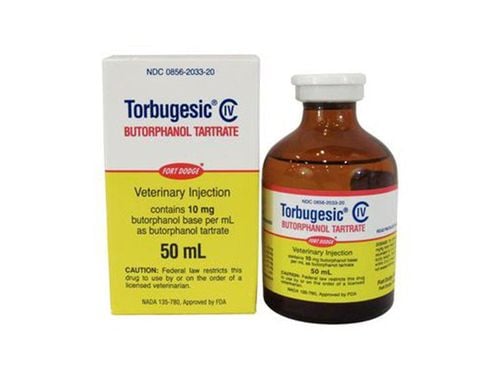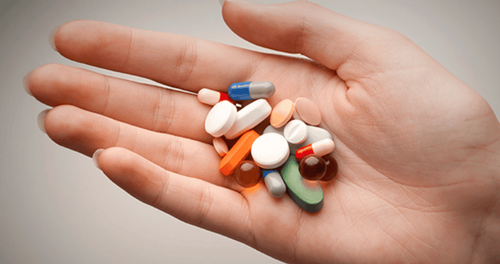This is an automatically translated article.
Facedol medicine contains ingredients Paracetamol 500 mg, Chlorpheniramine maleate 4 mg in the form of tablets. Facedol has the effect of reducing pain, reducing fever, reducing symptoms of nasal congestion, nasal congestion, runny nose caused by colds, flu, rhinitis, sinusitis, ...
1. What are the effects of Facedol?
Facedol medicine has the following ingredients and effects:
Paracetamol 500mg, is a para-aminophenol derivative with analgesic, antipyretic and weak anti-inflammatory activity. The mechanism of analgesic action has not been fully determined but may involve inhibition of CNS prostaglandin synthesis and blockade of pain impulse generation. Paracetamol has antipyretic effects due to its inhibitory effect on the thermoregulatory center of the hypothalamus. Chlorpheniramine maleate 4mg, belongs to the H1 antihistamine class, helps relieve allergy symptoms and is effective for signs such as rash, itchy eyes, itchy nose, throat or skin, coughing and sneezing. In addition, Chlorpheniramine maleate also inhibits the effect of acetylcholine, thereby reducing the secretion of some body fluids and reducing symptoms such as watery eyes and runny nose that cause discomfort for patients. Facedol is indicated for use with the purpose of relieving symptoms of fever, headache, muscle aches, joint pain, nasal congestion, nasal congestion, runny nose, in the following cases: colds, flu, inflammation. rhinitis, exudative mucositis, sinusitis, allergic rhinitis.
2. Dosage and how to use Facedol
2.1. How to use Facedol Facedol is prepared in the form of tablets, each containing Paracetamol 500mg and Chlorpheniramine maleate 4mg, for oral use. Before taking, the patient should carefully read the instructions for use on the drug leaflet. When swallowing, swallow the tablet whole with a glass of water, it should be taken after eating to avoid stomach irritation.
2.2. Dosage of Facedol for adults and children over 12 years old: Take 1-2 tablets/time x 3 times/day. Do not take more than 6 tablets/day. Children from 6 to 12 years old: Take 1/2 - 1 tablet/time, 2 - 3 times a day. Do not take more than 4 tablets/day. The interval between doses is 4-6 hours apart. This form of medicine is not suitable for children under 6 years of age.
3. Contraindications of the drug Facedol
Do not use Facedol in the following cases:
Patients with a history of allergy or hypersensitivity to Paracetamol, Chlorpheniramine maleae or to any of the excipients of the drug. Patients with severe liver failure. Acute bronchial asthma attack. Patients with hemolytic anemia due to deficiency of the enzyme glucose-6-phosphate dehydrogenase. Patients with a history of cardiovascular disease (eg, severe coronary artery disease, uncontrolled hypertension) The patient is taking monoamine oxidase inhibitor antidepressants (MAOIs).
4. Undesirable effects of the drug Facedol
Patients using Facedol may experience some unwanted side effects as follows:
Digestive system: May cause stomach-intestinal irritation, abdominal distension, constipation, nausea, vomiting, stomach pain , Dry mouth. On the liver: Increased liver enzymes. Nervous system: May cause headache, drowsiness, restlessness, anxiety. Blood and lymphatic system: Rarely anemia, thrombocytopenia, agranulocytosis. Vascular disorders: Hypotension or hypertension, flushing. If the patient experiences any unwanted side effects listed or not listed above, they should stop using the drug immediately and inform the doctor about the unwanted effects when taking the drug. .
5. Be careful when using the drug Facedol
Paracetamol in Facedol may cause serious skin reactions such as Stevens-Johnson syndrome (SJS), acute generalized exanthematous pustulosis (AGEP), toxic epidermal necrolysis syndrome. (TEN) or Lyell's syndrome. Facedol should be used with caution in patients with a history of severe anemia, the elderly, hyperthyroidism, and severe arteriosclerosis. Do not drink alcohol while taking Facedol because of the risk of increasing the toxicity of the drug on the liver. For pregnant women: Use the drug when prescribed by a doctor when the benefits outweigh the risk factors. For women who are breastfeeding: Facedol can pass into breast milk, nursing mothers use the drug as prescribed by the doctor when the benefits outweigh the risk factors. For drivers, operating machines: Facedol can cause side effects such as headache, dizziness, drowsiness, so it should be used with caution in subjects driving, operating machines and doing work that requires alertness.6. Facedol drug interactions
Patients should be aware of the following drug interactions of Facedol:
Isoniazid, anticonvulsants (Phenytoin, Barbiturates, Carbamazepine) may increase the risk of hepatotoxicity caused by the Paracetamol component in Facedol. Do not use Facedol with these drug classes. Phenothiazines should not be used concurrently with Facedol, as this may lead to the potential for severe hypothermia. Metoclopramide may increase the absorption of Facedol. Monoamine oxidase inhibitors (MAOIs) potentiate the effects of Facedol by decreasing the metabolism of Facedol. Facedol may interfere with the effect of antihypertensive drugs, people with a history of high blood pressure should be cautious when using Facedol.
7. Facedol drug overdose and treatment
7.1. Facedol drug overdose Facedol drug overdose is mainly due to the hepatotoxic effect of the Paracetamol component in the drug. Overdose can be caused by taking a single high dose, or by repeating high doses of Facedol (7.5 - 10g per day, for 1-2 days), or by taking the drug for a long time.
The most serious acute toxic effect of Facedol overdose is hepatic necrosis and possibly death. Symptoms of nausea, vomiting and abdominal pain usually occur within 2-3 hours after taking high doses of Facedol.
If the patient takes an overdose of the drug, ask the patient to immediately go to the nearest medical facility so that the medical staff can have a timely treatment method.
7.2. Treatment of drug overdose Facedol Gastric lavage is the most effective method within 4 hours after taking the drug overdose, in addition to active supportive treatment. N-acetylcysteine, Methionine can be used as an antidote for Facedol overdose. Activated charcoal or salt bleach can be used to reduce the absorption of Facedol. Facedol medicine has the effect of reducing pain, reducing fever, reducing symptoms of nasal congestion, nasal congestion, runny nose, ... caused by colds, flu, rhinitis, sinusitis, ... For the drug to achieve effective treatment For the best treatment, the patient should strictly follow the instructions of the treating doctor. In case the use of the drug is not effective, or there are unwanted side effects, the patient should stop the drug and go to the medical facilities for examination and treatment.




